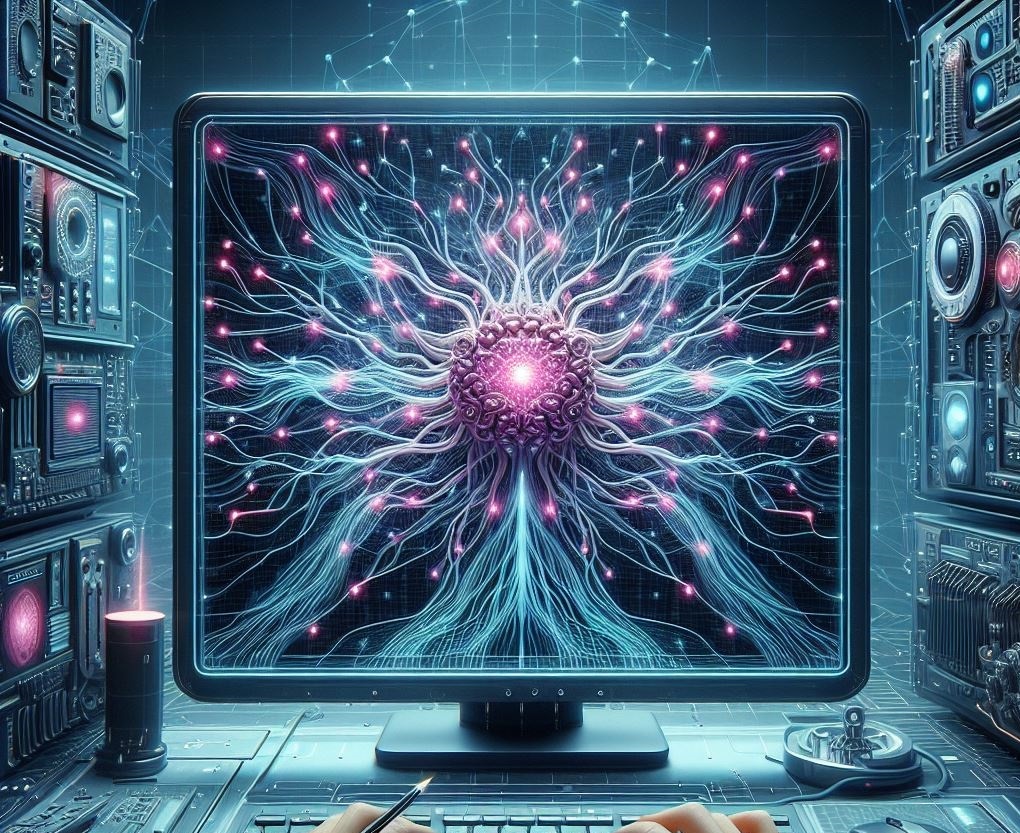Intel Develops World’s Largest Neuromorphic Computer to Train AI Inspired by Human Brain
Intel has developed a computer that can mimic the human brain, the tech is called neuromorphic computing, and this is the world’s largest of its kind neuromorphic computer. Intel anticipates that it will be helpful in artificial intelligence research in the future. Hala Point uses Intel’s Loihi 2 processor, which is specifically designed for research related to brain-inspired AI, the main focus is the sustainability and efficiency of today’s AI. The unique point of this computer is that it could enable real time learning on a continuous basis.
Hala Point, the neuromorphic computing beast
The computer is named “Hala Point,” and it is different than conventional computers, which rely on central processing units (CPUs) and graphic processing units (GPUs). According to the company, it uses 100 times less energy and is 50 times faster at performing AI related processing. It boasts 1152 Loihi 2 processors, along with 2300 x83 processors also on board. Intel Labs director of the Neuromorphic Computing Lab, Mike Davies, said,
“The computing cost of today’s AI models is rising at unsustainable rates. The industry needs fundamentally new approaches capable of scaling. For that reason, we developed Hala Point, which combines deep learning efficiency with novel brain-inspired learning and optimization capabilities. We hope that research with Hala Point will advance the efficiency and adaptability of large-scale AI technology.”
Source: Intel.
The computer is capable of supporting 20 quadrillion operations per second, or 20 petaops, with an efficiency of 15 trillion operations per second on 8-bit, these metrics are for carrying deep neural networks conventionally.
Hala Point, the neuromorphic computer to be installed at SNL
Sandia National Laboratories (SNL) in New Mexico will be home to Hala Point, as it will be initially installed there, and researchers will leverage it to assess challenges in computing architecture, computer science, and also device physics. Basically, it will be used for brain scale computing research.
According to scientists at Sandia National Laboratories, Hala Point will help them in AI research and provide them with an edge for solving critical research problems, as Craig Vineyard, team lead at the lab, said,
“Working with Hala Point improves our Sandia team’s capability to solve computational and scientific modeling problems. Conducting research with a system of this size will allow us to keep pace with AI’s evolution in fields ranging from commercial to defense to basic science.”
Source: Intel.
At this time, Hala Point is only a research pilot version and will be used to advance the Proficiencies of its future commercial versions. Intel hopes that it will help in LLM’s ability to perpetually learn from the latest data. This type of development will reduce the training load for AI deployments. Along with many other benefits, Hala Point has brought neuromorphic performance to mainstream deep learning models.
Intel’s page can be seen here.






